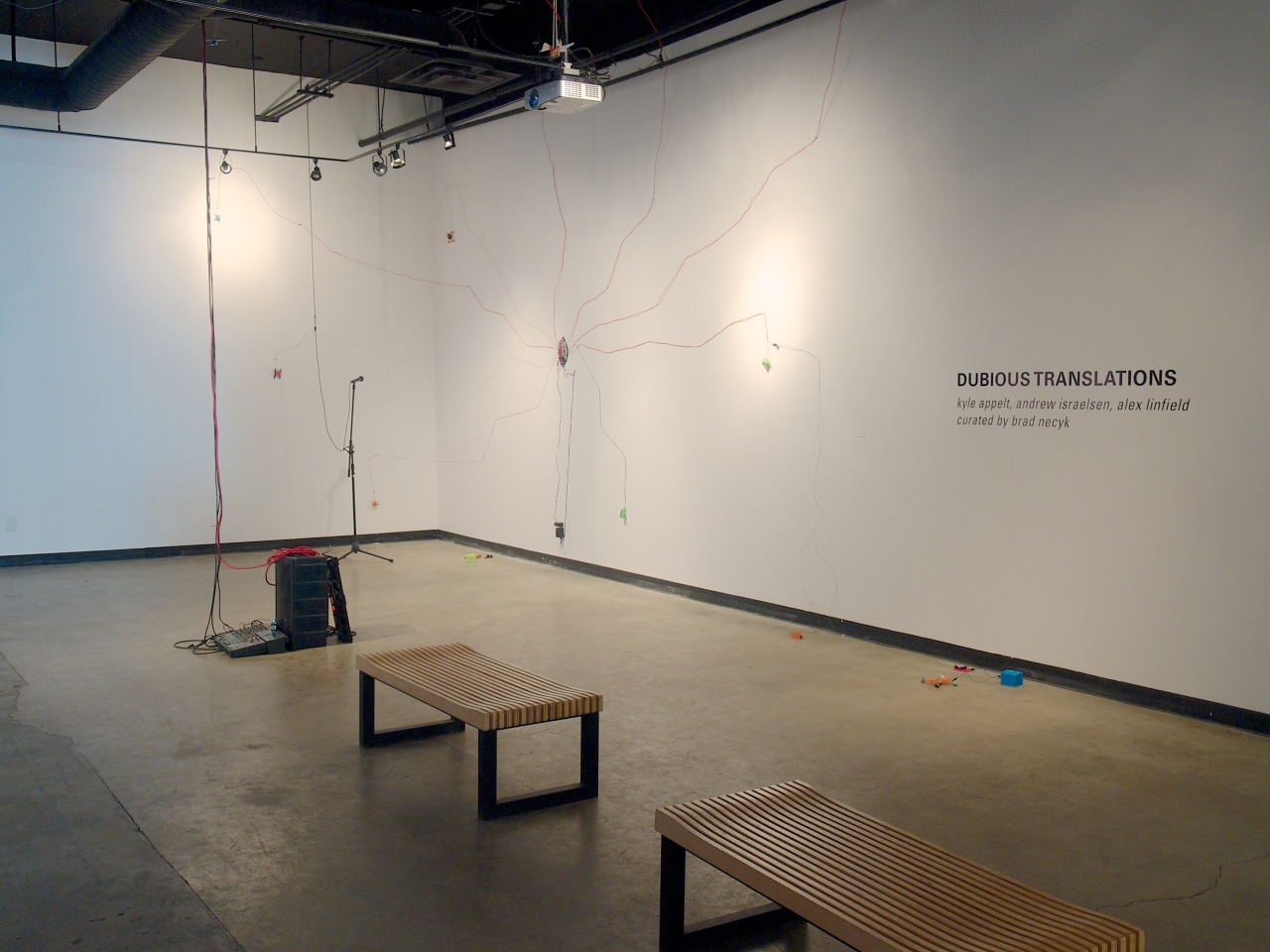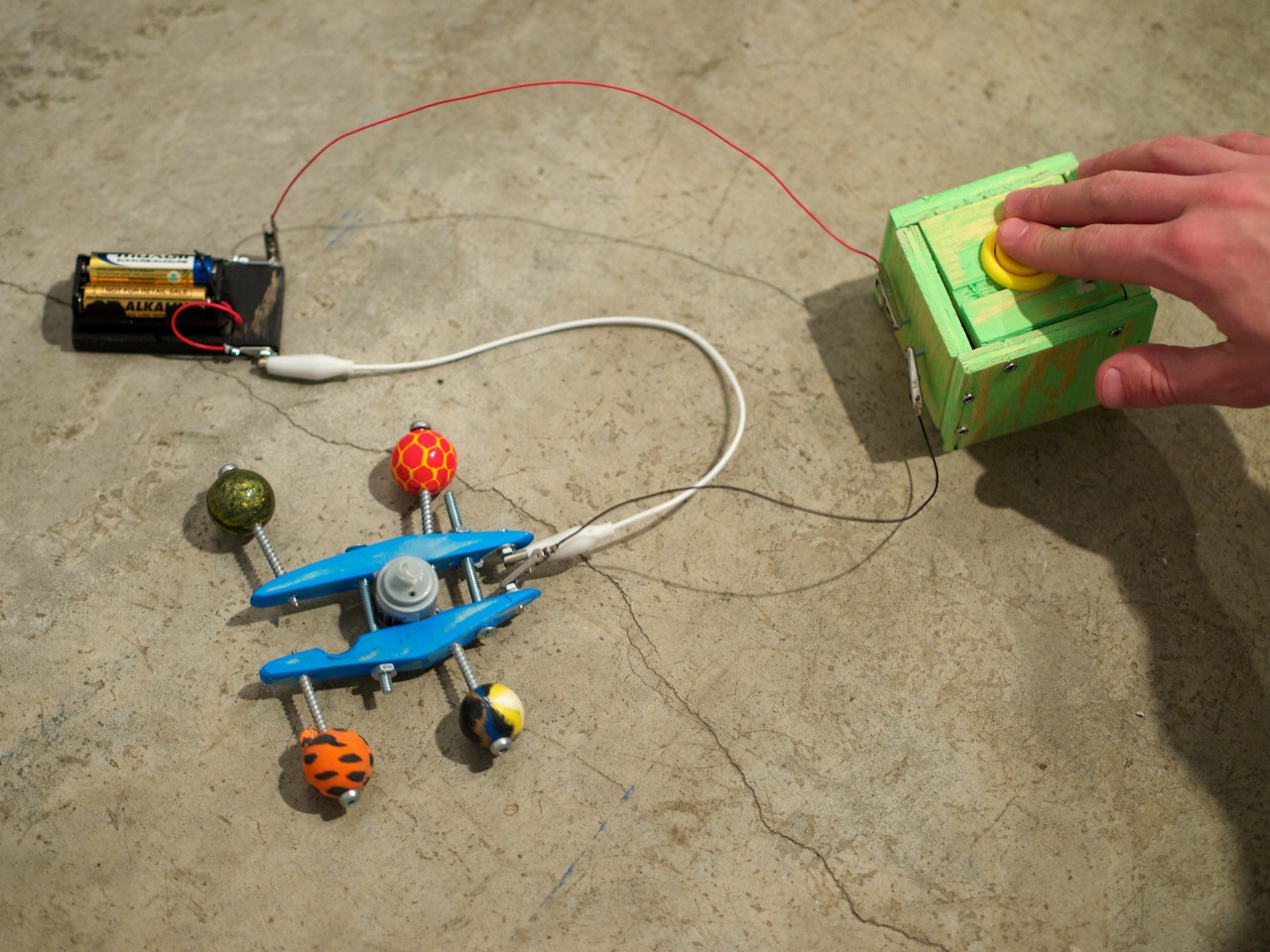Dubious Translations | Featuring works by Kyle Terrence, Andrew Israelsen and Alex Linfield, curated by Brad Necyk
April 10 – May 23, 2015
Opening reception | Friday, April 10 at 7 pm
Edmonton-based photographer and multimedia artist Brad Necyk is no stranger to showing his own work; this spring we are excited to work alongside him as he applies himself to curation.
For Dubious Translations, Necyk has selected works by three local artists which explore the challenge of translating meaning while practicing within the contemporary visual arts. The works featured–including video projections, sound installations, and algorithmically/procedurally-generated content–interact with each other on not only a metaphorical level, but a material one: interrupting and corrupting each other, they evoke the liminal space occupied by all contemporary art, in which many artists struggle with insufficient means of translation.
Within Dubious Translations
Diversification of new media practices in contemporary art bring with them new challenges and opportunities for display and interpretative response. At an institutional level, conventions of (and capacity for) display can be prohibitive in affording these emergent creative practices the requisite platform for their dissemination and the reciprocation of public engagement. In keeping with a mandate that promotes experimentation and creative innovation at the juncture between contemporary art and ideas in Alberta, Latitude 53 embodies an invaluable platform for those artists whose practice is cognizant of the dynamic whereby new media platforms facilitate contemporary experience and information exchange. Dubious Translations features work by three local artists whose practice actively engages this technological frontier and, to varying degrees, interrogate its authenticity.
To demarcate and establish continuity of influence is conducive to arriving at a semblance of order from which meaning may derived, and are amongst the principles by which, as viewers, we may ‘successfully’ navigate the exhibition environment. Sequencing of works, and the ensuing narrative, can then be observed to orchestrate this experience, establishing an institutional rhetoric whereby individual works may be encountered, and resolved, piecemeal. For optimum coherence, conventional display practices require the viewer to be complicitous in the fabrication of said narrative. Wall text may burden intuitive response, and at the margin between thematic displays the phenomenological bleed is necessarily suppressed. Considerate of the increasingly diffuse boundaries and convoluted permissions by which information is traded and accessed, Dubious Translations is reflective of the reality of contemporary communicative exchange.
The artists of Dubious Translations are united by their common investment in time-based media. The assignation of disparate temporal parameters for these works, however, creates an asynchronous relationship culminating in innumerable degrees of overlap and exchange. Silence is followed by the incessant buzzing of Israelson’s motorized bug, vibrating aloft and spasmodically in the centre of the gallery, in which direction the viewer must crane to determine the source of this perturbed auditory stimulus. Tracing its tether, the creature proves one of multiple equivalent forms populating the far recesses of the space. A metronomic accompaniment signals the onset of Terrence’s video installation, a mesmeric sequence of films edited and collated to arrive at an assembly whose cast is united by the implicit realization of their immanent demise. The unflinching repetition of key frames argues the decisive moment yet concedes its elusivity. Linfield’s understated installation completes the exhibition, to which the viewer is drawn by the crescendo of competing radio frequencies, and from which a program attempting to transcribe text from the resulting auditory stimulus elicits a nonsensical stream of words.
It is the peripheral auditory stimuli of the gallery taken up by Linfield’s recording that encapsulates the uncertain dynamic of interplay that Dubious Translationsembodies. Mirroring contemporary communicative exchange as facilitated by new media technologies, the viewer is repeatedly referenced as the unifying conduit through which the influx of visual and auditory stimuli are collectively filtered, if not simultaneously directed. In negotiating the threshold between Israelson, Terrence and Linfield, the viewer’s contribution to the collective algorithm is imparted imperceptibly at first, and then subtly and by degrees. Individual meaning is never resolved. While the dynamic of exchange suggests elucidation, further investigation reveals the hybridized data as compromised, the susceptibility of each framework to corruption, and the process of translation as appropriately impaired.
—Jacques Talbot
Jacques Talbot has worked towards the realisation of exhibitions of contemporary art in museums within the United Kingdom and North America. His interests include opportunities for, and trends within, current display practices in light of new media and technologies as these relate to contemporary art, and the repercussions of these for traditional media. Jacques has contributed to several publications including Sculpture magazine. He presently resides in Edmonton, Alberta, where he is completing research examining installation art as a medium conducive to innovation in museological display practices and phenomenological reception thereof.
Bridget Moser is a performance and video artist whose work combines prop comedy, experimental theatre, performance art, absurd monologue, existential anxiety and intuitive dance. She has presented work in venues across Canada, including the Art Gallery of Ontario, Mercer Union, the Art Museum at the University of Toronto, Oakville Galleries, Vancouver Art Gallery, MSVU Gallery, and Western Front. She has presented projects throughout the US and Europe and has been a resident artist at Fondazione Antonio Ratti in Como, Italy, and visiting faculty at The Banff Centre. Her work has been featured in Canadian Art, C Magazine, Art in America, Artribune Italy, The Dance Current, NOWNESS, and a collaborative publication with other Fondazione Antonio Ratti residents published by Mousse Magazine. She was shortlisted for the 2017 Sobey Art Award.




